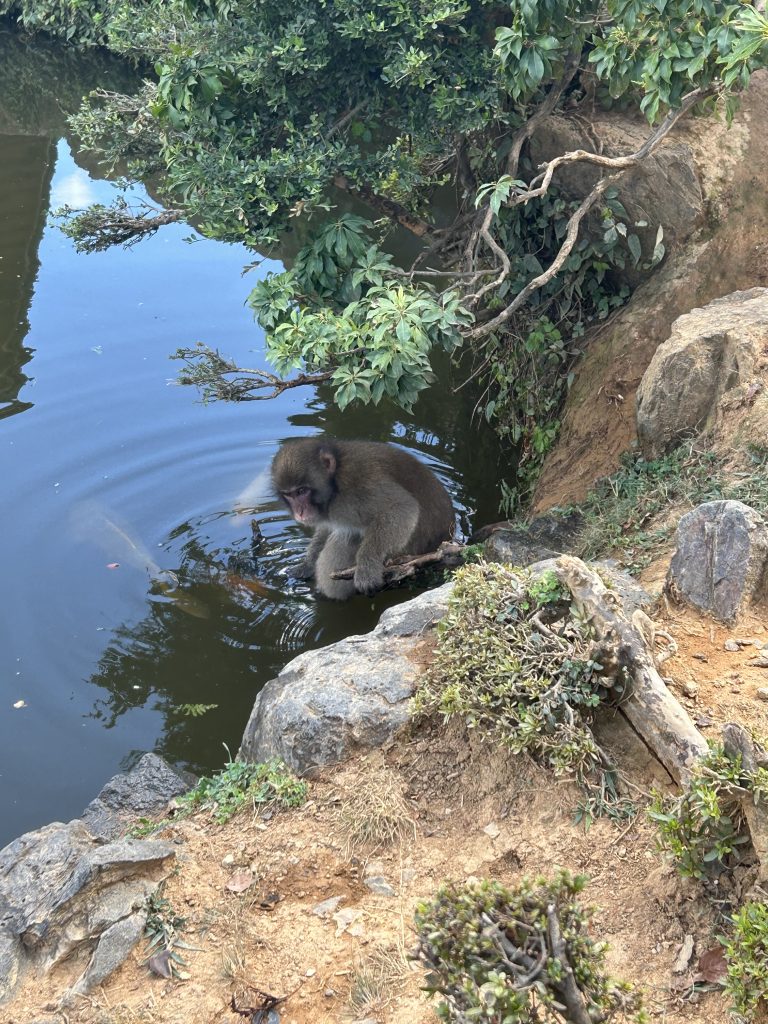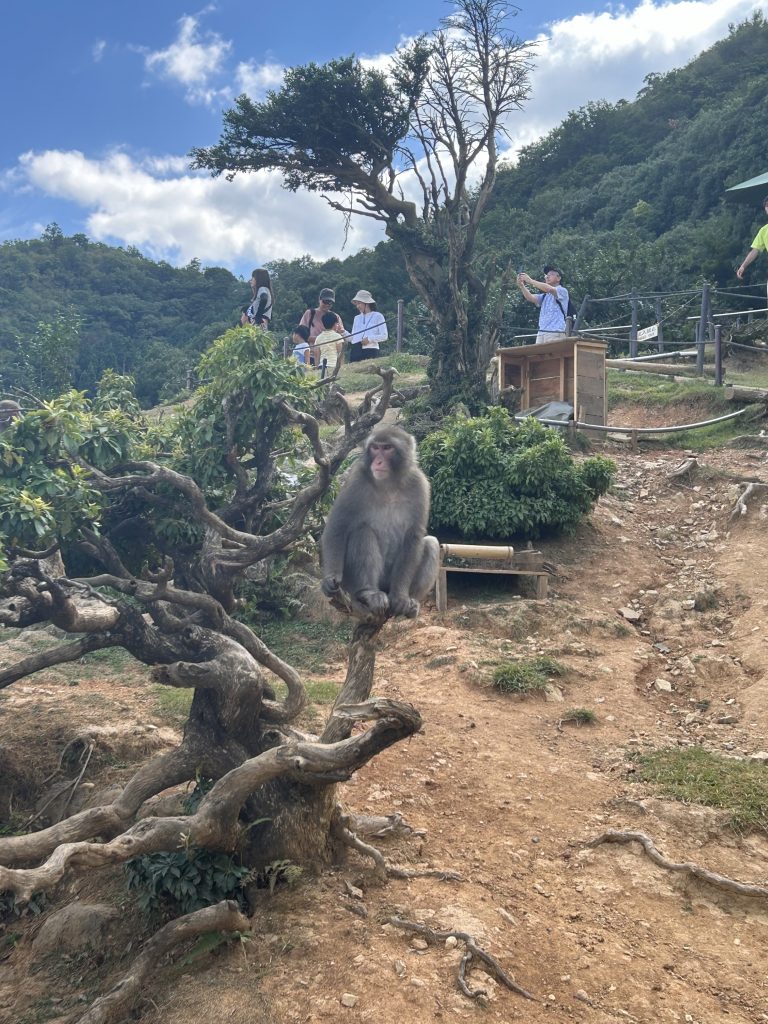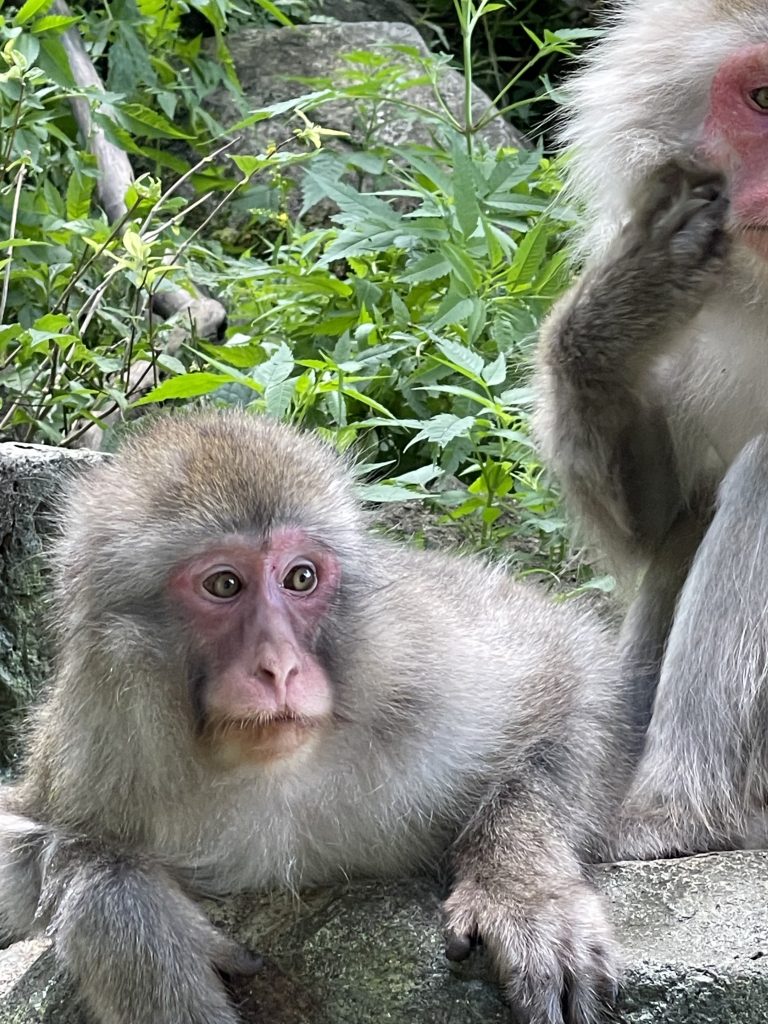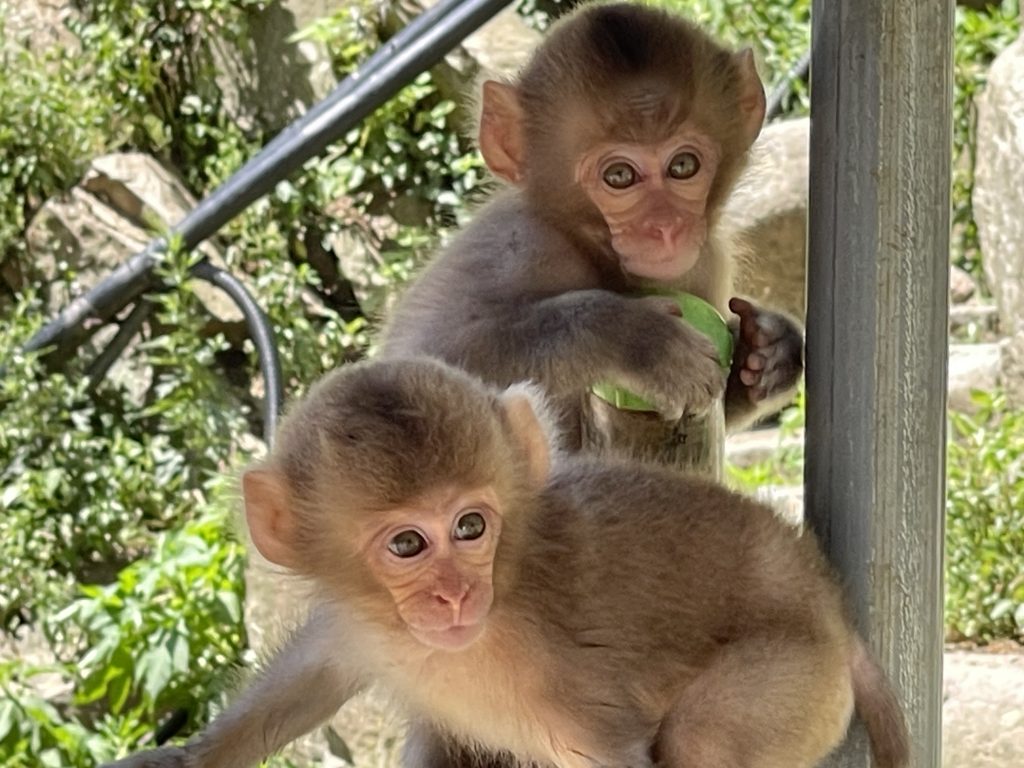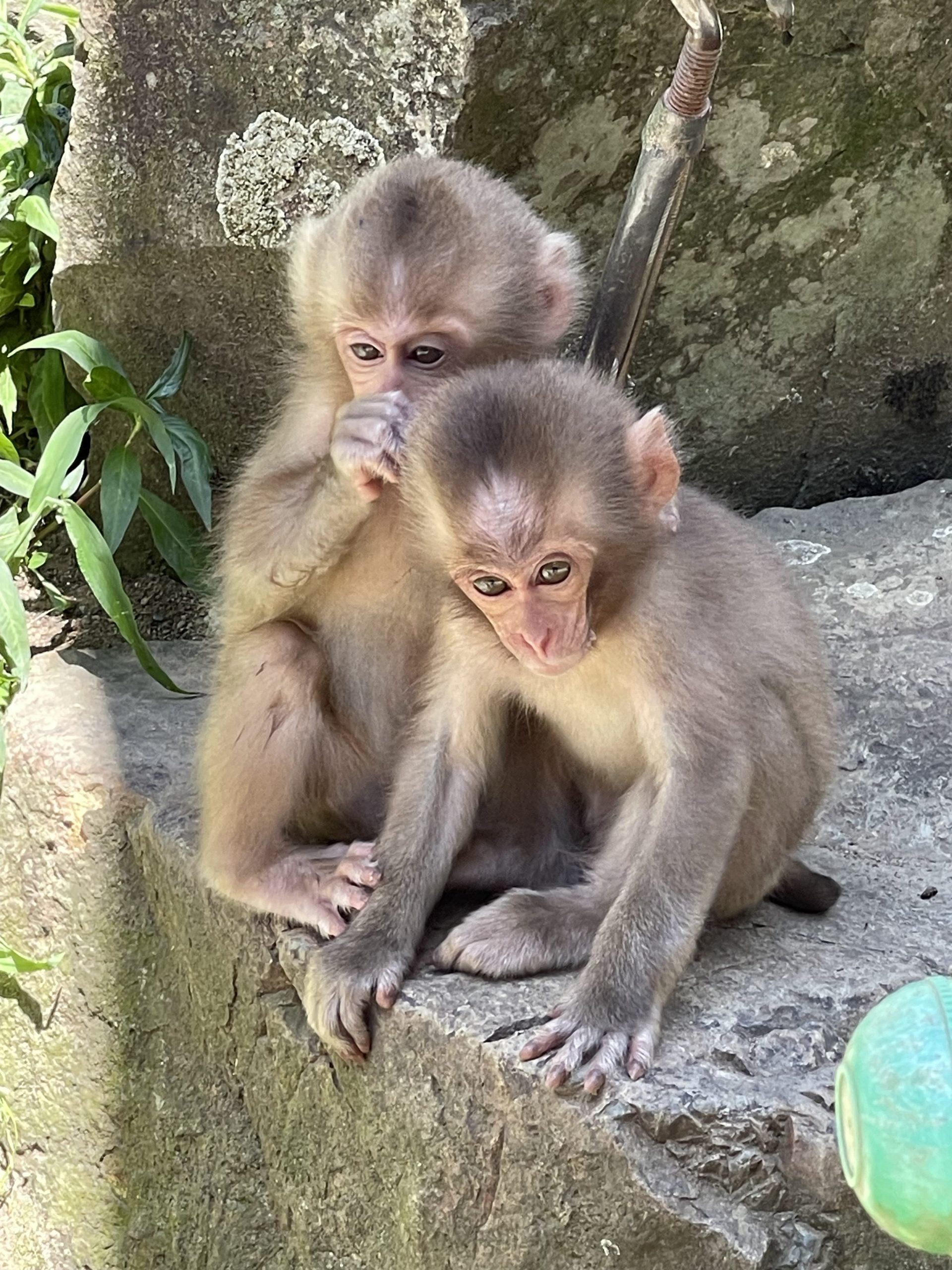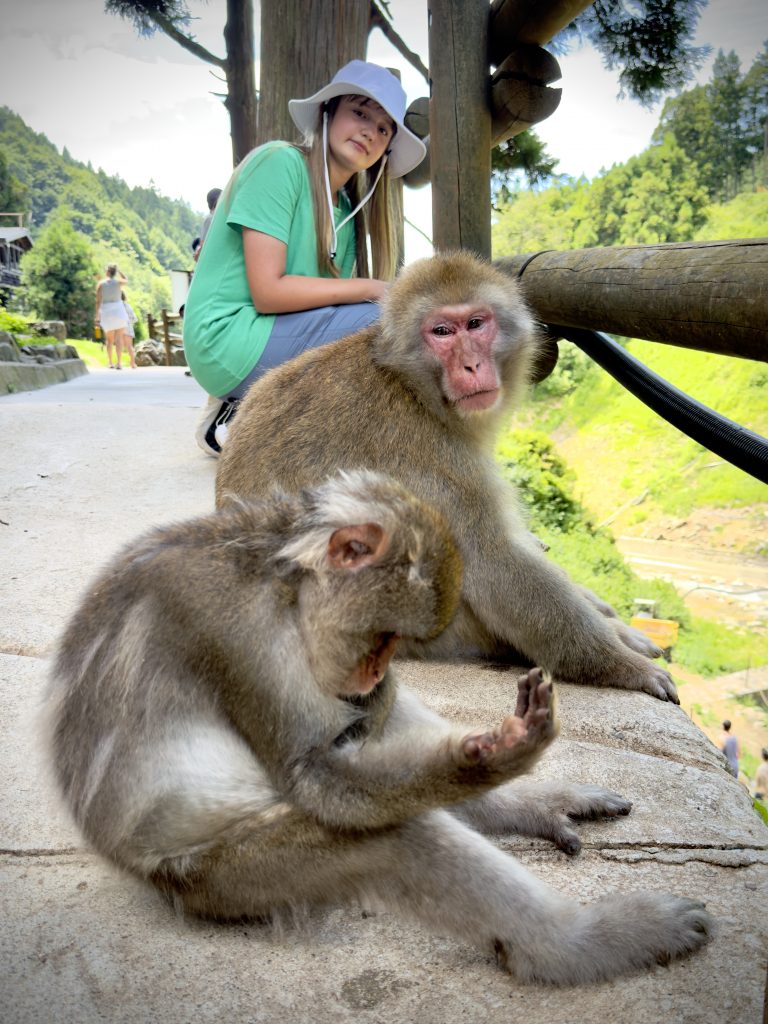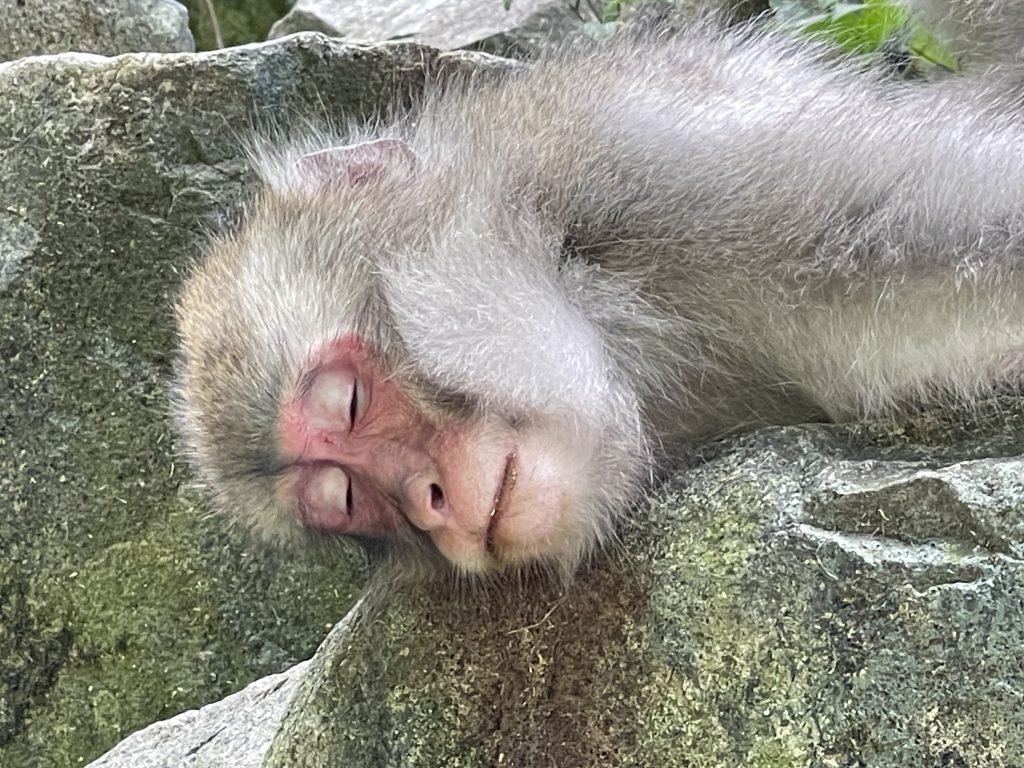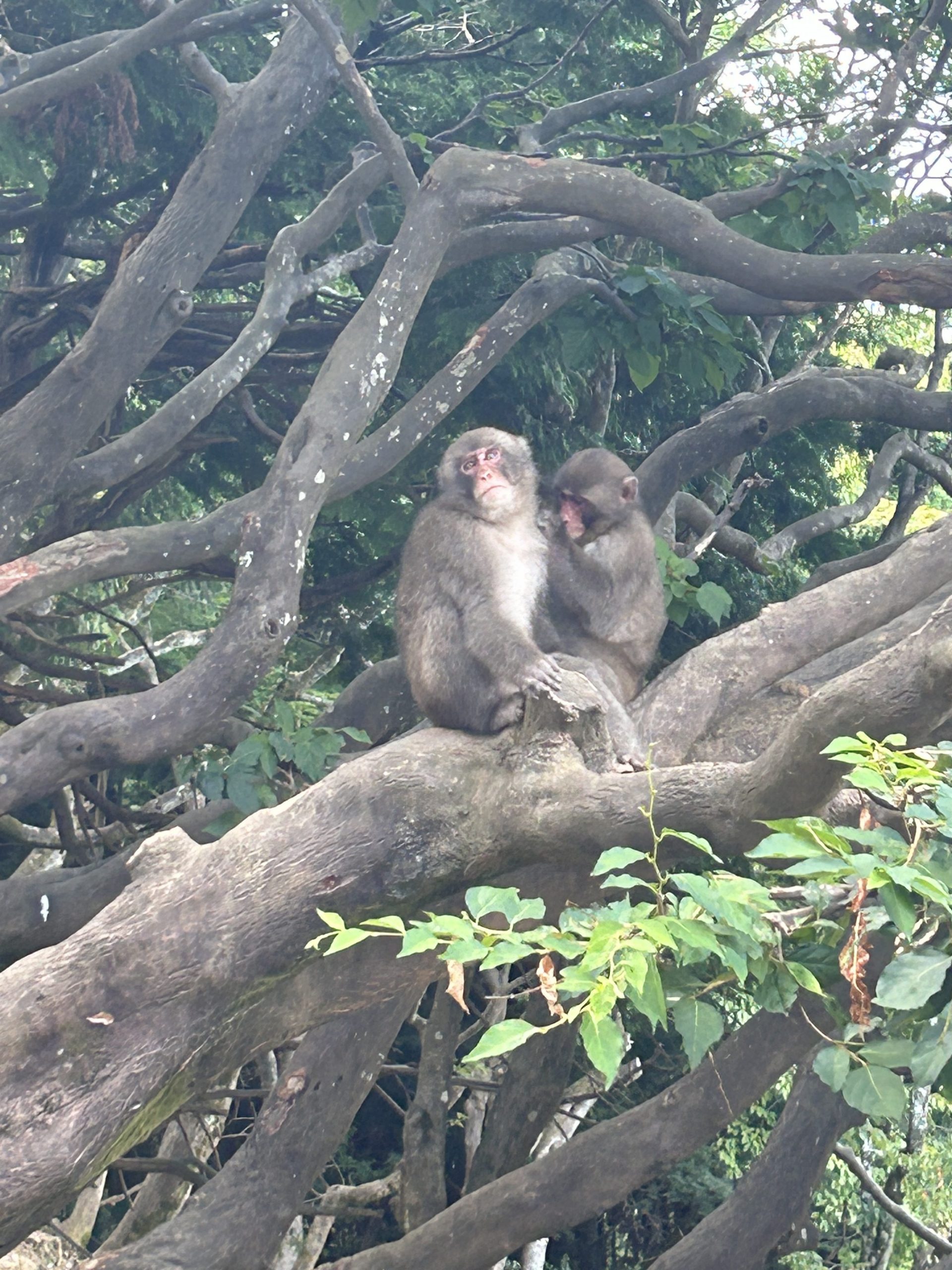
A few days ago, my parents and I visited the famous Kyoto’s Arashiyama Monkey Park Iwatayama. Although the hike was long, it was worth it to see the beautiful forest and the historic city of Kyoto, one of Japan’s oldest cities. The climb to the top of the mountain was made easier by the cool shade provided by passing clouds.
After about 15 minutes of hiking, we reached the top of the mountain and were welcomed by the park’s residents: macaque monkeys. These monkeys are native to Japan and are very familiar with the forest, though they have adapted to receiving food from visitors since the park opened. To feed the monkeys, we had to enter a small building with cage-like windows. Here, we could buy bags of fresh fruit or peanuts for about ¥100 each. Some monkeys were gentle and careful while eating, but others were picky and refused the nuts.
A rule of the park is that you must not bring any monkey food outside the feeding area, as the monkeys would start to pickpocket visitors in the park. Ponds on the mountain also featured koi fish, adding to the park’s overall aesthetic appeal. The monkeys and the koi didn’t get along, but watching the animals interact was also pleasurable.
Overall, the park was fantastic and offered a comfortable and enjoyable experience interacting with monkeys up close.
Compared to a previous visit to Jigokudani Monkey Park, the hike here was steeper and it was a hotter day in general, making it hard to compare both days at two different monkey parks. However, I enjoyed the feeding interactions more at this park.
Jigokudani, located in a more remote area, required a Shinkansen ride, making it a more expensive trip. Though it’s in a remote location, Jigokudani is notable for its 200 monkeys that visit the onsen daily. The advantage of Jigokudani is that you can see monkeys in their natural habitat and observe their behavior away from human influence. While exploring, we discovered a special onsen (hot spring) for the monkeys. This onsen is naturally heated by geothermal energy from the earth. In Jigokudani, it was nice to see groups and families of baby monkeys. There, social interactions between the monkeys was more in display for visitors. We saw many more age groups in the park, including trouble-making males trying to defend their territory. Mothers collaborating into making a baby monkey daycare under the bridge, so more monkeys can scavenge for food. Even though the monkeys left during the afternoons into the forest to eat cicadas, the monkeys were well fed by the caretakers in the park. The monkeys were only handled by the park staff, so that the monkeys don’t start associating visitors as “food-givers”, because being next to the monkeys by yourself may be dangerous.
One downside of Jigokudani Monkey Park is that if you’re hoping to interact with the monkeys, you might be disappointed. The monkeys there are wild and generally not interested in interacting with humans. Additionally, we observed more aggressive behavior among the monkeys, with some fights and screams. The staff also had limited ability to intervene and stop these fights. It’s important to be cautious and avoid eye contact with angry monkeys, as this can make the situation worse.
Despite these challenges, Jigokudani offers a unique opportunity to observe monkeys in their natural habitat. If you appreciate wildlife and are prepared for a more hands-off experience, the park provides a fascinating glimpse into their behavior and daily life. The serene setting and the chance to see monkeys in the wild can be very rewarding. Just remember to follow the park’s guidelines and respect the monkeys’ space for a safe and enjoyable visit.
In summary, if you want to see monkeys in the wild and don’t mind spending a bit more, Jigokudani is a great choice. If you have young children, are up for a bit of a hike, and want a more interactive experience, the Kyoto’s Arashiyama Monkey Park is ideal. If you love monkeys, visiting both parks is definitely worth it!
